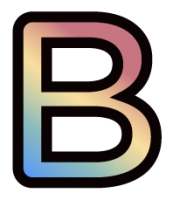The Wonders of Human Face Recognition
NOTE: This is a reprint of an article originally published by Alex Kilpatrick in April 2010 on a different blog. We are reposting them on the Blink Identity blog because these issues are important and we want to keep our writing on these issues in one place.
Most people who work in the field of Artificial Intelligence come away with a healthy respect for the miracle of human intelligence. Humans are wonderful at certain kinds of tasks, and trying to make computers do them well is extremely frustrating. I would like to talk today about the ability of humans to recognize faces. We are genetically wired to recognize faces, so it is no real surprise that we can do it well. Recognizing mom’s face leads to better survival.
When I work with computer face matching, people will come to me with two pictures that the computer says don’t match and ask me “Why don’t these match?” I look at them and they are an obvious match. But I am seeing them with human eyes, not computer eyes. Computers don’t recognize face even remotely the same way we do. To a computer, a face is just an square array of pixels (dots) of different colors. Let’s look at some examples:
A computer sees two totally unrelated images here.
These two images are reduced to about the size of a driver’s license photo. I am sure that 100% of the people out there will recognize that this is the same person, and the same pose. If you are discriminating, you might be able to tell which picture is higher quality. But overall, they really look pretty close to being the same. No human would ever have a problem being able to tell that there the same person and same photo. But if you just glance, you may see them about the same. However, they are not really the same at all.
I am going to give you a glimpse into what the computer sees. Let’s zoom in to just her eye:
In these images you can see the individual pixels of color. These images are the same resolution, but one image clearly contains a lot more information that can be used by the computer than the other one. The higher quality image is 1.2 MB and the lower quality image is 150 KB, a factor about 10X (not that a bigger file necessarily contains more information.)
our brain kind glosses over this lack of information. You see eyes in both pictures, and one is lower quality than the other one, but your brain knows it is an eye and fills in the detail for you. You are not really conscious of it. But to a computer, these images are very, very different, and will not match.
Let’s look at one final example. The “high resolution” picture I used in this blog post was actually compressed in order to make it palatable for the Web. The original image was about 10 MB. Here is the same eye from the original image:
You can see that this image has a lot more detail, and more information usable by the computer for face matching. This is why we say you can’t trust your eyes when evaluating whether a picture is good for face matching. Your brain lies to you. You have to zoom in to the pixel level to see what the computer sees.





